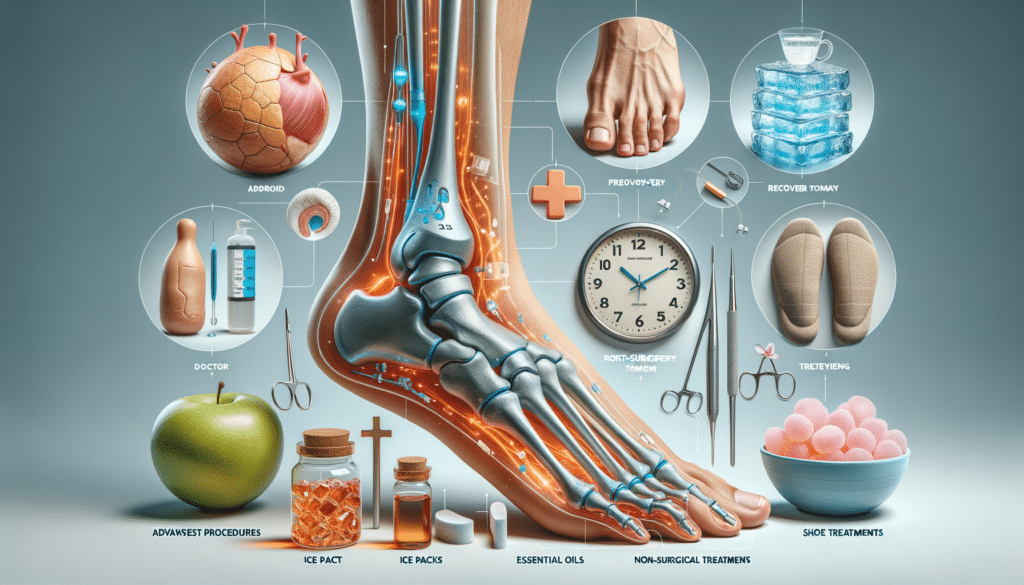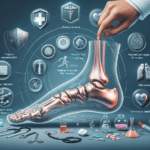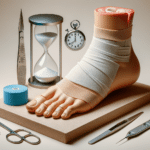Consulting a Doctor for Bunion Surgery
When bunions start to interfere with daily life, it might be time to consult a doctor. A bunion is a bony bump that forms on the joint at the base of your big toe, and while it might seem like a minor inconvenience at first, it can lead to significant discomfort and mobility issues over time. Consulting a doctor is crucial when non-surgical treatments fail to alleviate pain or when the bunion affects your quality of life.
Doctors specializing in foot and ankle conditions, such as podiatrists or orthopedic surgeons, can offer a comprehensive evaluation of your condition. They will typically conduct a physical examination and may order X-rays to assess the severity of the bunion and any associated deformities. This thorough diagnosis is essential for determining the most appropriate treatment plan.
It’s important to seek medical advice if you experience persistent pain that interferes with walking or wearing shoes, swelling that doesn’t improve, or if the bunion is causing your toes to overlap. Early intervention can help prevent further complications, such as arthritis in the joint or chronic pain. A timely consultation can also open up more treatment options, including non-surgical methods that might be more effective in the early stages.
In summary, while bunions can often be managed with home care and lifestyle adjustments, there comes a point where professional medical advice is necessary. If you find that your bunion is affecting your daily activities or causing significant discomfort, consulting a doctor can provide clarity and a path forward, whether through surgical or non-surgical means.
Exploring the Benefits of Bunion Surgery
Bunion surgery, medically known as a bunionectomy, offers several benefits for individuals suffering from severe bunion pain and deformity. The primary goal of the surgery is to relieve pain and correct the deformity to improve foot function. While surgery is typically considered when other treatments have failed, it can provide significant relief and enhance the quality of life for many patients.
One of the most notable benefits of bunion surgery is pain relief. By realigning the bones, ligaments, and tendons, the surgery addresses the root cause of the pain, providing long-term relief. Additionally, correcting the deformity can restore normal foot function, allowing for a more comfortable gait and the ability to wear a wider variety of footwear without discomfort.
Another advantage of bunion surgery is the prevention of further joint damage. Untreated bunions can lead to arthritis in the joint, causing chronic pain and stiffness. By addressing the issue surgically, patients can avoid these complications and maintain better joint health.
It’s also worth noting that bunion surgery has evolved over the years, with minimally invasive techniques now available. These advancements mean shorter recovery times and less postoperative pain, making the prospect of surgery less daunting for many patients. However, it’s crucial to have a thorough discussion with a healthcare professional to understand the potential risks and benefits specific to your condition.
In conclusion, while bunion surgery is not without its challenges, the benefits can be substantial for those suffering from severe symptoms. It offers a path to pain relief, improved mobility, and a better quality of life, making it a valuable option for many patients.
Newest Procedures for Bunions: A Look at Innovations
Recent advancements in medical technology have introduced new procedures for bunion treatment that promise improved outcomes and faster recovery times. One of the latest innovations is minimally invasive bunion surgery, which has gained popularity due to its less invasive nature and quicker healing process.
Minimally invasive bunion surgery involves making small incisions around the bunion area, through which specialized instruments are used to correct the deformity. This technique minimizes soft tissue damage and reduces postoperative pain and swelling. Patients undergoing this procedure often experience faster recovery times compared to traditional open surgery, allowing them to return to normal activities sooner.
Another innovative approach is the use of 3D imaging and planning software in bunion surgeries. Surgeons can create a detailed model of the patient’s foot and plan the surgery with precision, ensuring optimal alignment and correction. This technology enhances surgical accuracy and can lead to better long-term outcomes.
Additionally, some procedures now include the use of advanced fixation devices, such as screws or plates, that provide better stability and support during the healing process. These devices are designed to be more biomechanically compatible with the foot, reducing the risk of complications and improving overall surgical success rates.
While these newer procedures offer promising results, it’s important for patients to have a detailed discussion with their healthcare provider to determine the most suitable option based on their specific condition and overall health. As with any surgical procedure, there are risks involved, and a thorough understanding of the potential benefits and drawbacks is essential.
In summary, the field of bunion surgery is evolving with the introduction of innovative techniques and technologies. These advancements offer hope for more effective treatment options, less pain, and quicker recovery times, making surgery a more accessible option for those in need.


